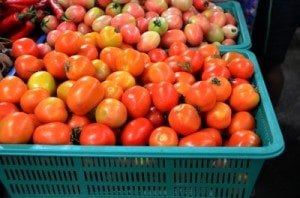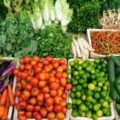When the big storm hits, the first thing to disappear from the shelves of the grocery store is canned goods. They're cheap, they retain their nutrition, and they last forever.
When it comes to cooked produce, the kind you buy in metal cylinders at the store can't hold a candle in flavor and quality to those canned at home. Canning fruits and vegetables is economical, practical, and fun. If you have a garden, it's the best way to make sure your hard work doesn't go to waste.
Follow this guide to canning produce to save money:
Safety First
Contaminated produce can contain harmful or even fatal bacteria including botulism. Always follow the recipe for the specific item you’re canning. Never use bad, questionable or over-ripe produce.
According to the National Center for Home Food Preservation, as per United States Department of Agriculture guidelines, you should never can pureed or mashed squash or pumpkin, also called pumpkin or squash butter. If you want to can squash or pumpkin, cut it into cubes and preserve it that way.
Types of Canning
There are two types of canning: boiling water bath canning and pressure cooker canning. The first is usually used for canning most fruit. The latter is typically used for canning most vegetables
Boiling Water Bath Canning
Water-bath canners are large containers in which jars of produce are submerged in boiling water, which heats the fruit to the water’s temperature. Because their high anti-bacterial acid content does not require them to be heated past the 212 degrees — the temperature of boiling water — tomatoes, pickled vegetables, and most fruit can be preserved this way.
Pressure Canners
Like water-bath canners, pressure canners are also large containers with tight-fitting lids that can fit several big jars of produce. The difference is, less water is added — just enough to create steam. The steam’s pressure is raised to about 10 pounds, where it pressure-treats the jars of produce. The sealed lid contains a vent, which is used to regulate the flow of steam.
Grow Money
By canning, you might as well be growing money in your garden. The Christian Science Monitor put out a wonderful breakdown on just how much money you'll save if you can what you grow. Pressure canners last, the mason jars can be reused until you break them, and freshly canned veggies make a great, thoughtful gift.
Canning is economically and environmentally viable. Growing food and preserving it is both a hobby and money-saving household strategy. It prevents waste, puts your garden to real use, and prevents the need to buy from the store. There's really no downside to preserving your own veggies. You should and you can.
~~~~~~~
written by: Andrew Lisa
Andrew Lisa is a freelance writer living in Los Angeles. He writes about family budgeting, personal finance, and has profiled several top business leaders, including Stephen Wynn.
~~~~~~~
Image courtesy of Sira Anamwong / FreeDigitalPhotos.net





Great tips here! Doomsday prepping aside, this is a great way to save money. Honestly something I’ve overlooked lately. Way to think outside the box.